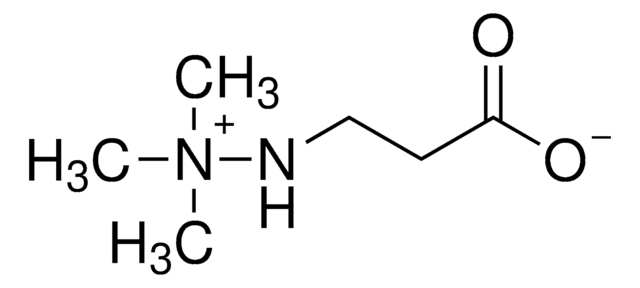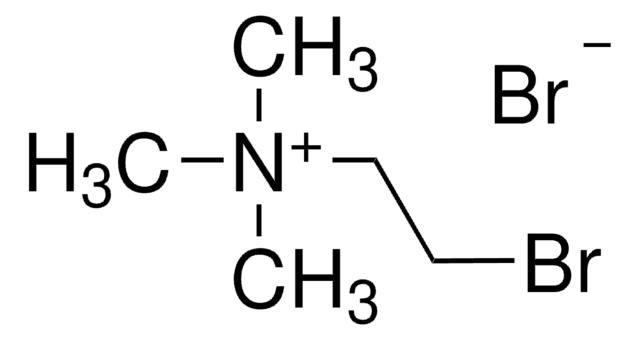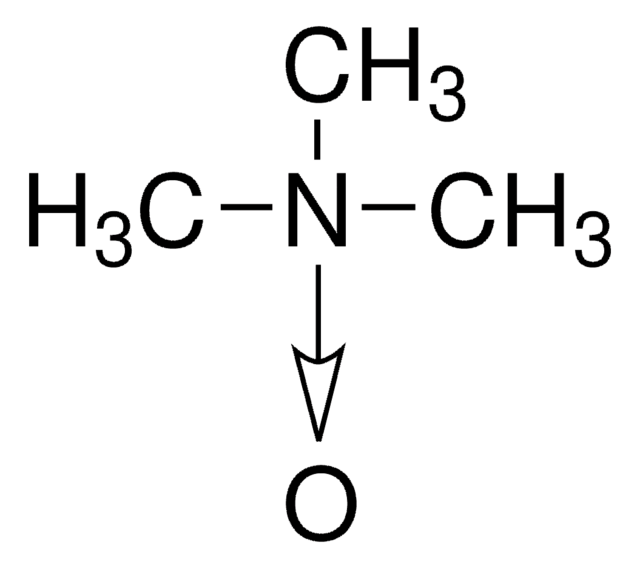403245
(3-Carboxypropyl)trimethylammonium chloride
technical grade
Synonym(s):
γ-Butyrobetaine hydrochloride, Deoxycarnitine hydrochloride
Sign Into View Organizational & Contract Pricing
All Photos(3)
About This Item
Linear Formula:
C7H16NO2Cl
CAS Number:
Molecular Weight:
181.66
MDL number:
UNSPSC Code:
12352116
PubChem Substance ID:
NACRES:
NA.22
Recommended Products
grade
technical grade
mp
220 °C (dec.) (lit.)
SMILES string
[Cl-].C[N+](C)(C)CCCC(O)=O
InChI
1S/C7H15NO2.ClH/c1-8(2,3)6-4-5-7(9)10;/h4-6H2,1-3H3;1H
InChI key
GNRKTORAJTTYIW-UHFFFAOYSA-N
Looking for similar products? Visit Product Comparison Guide
Related Categories
Storage Class
11 - Combustible Solids
wgk_germany
WGK 3
flash_point_f
Not applicable
flash_point_c
Not applicable
ppe
dust mask type N95 (US), Eyeshields, Gloves
Choose from one of the most recent versions:
Already Own This Product?
Find documentation for the products that you have recently purchased in the Document Library.
Customers Also Viewed
J S Serrano et al.
Methods and findings in experimental and clinical pharmacology, 5(4), 251-254 (1983-01-01)
The effects of GABA, its quaternary derivative N-trimethyl GABA and quinidine have been studied in a model of ventricular automaticity induced in the isolated right ventricle of the rat. GABA shows low anti-automatic activity. N-trimethyl GABA and quinidine were, however
Frédéric M Vaz et al.
The Biochemical journal, 361(Pt 3), 417-429 (2002-01-23)
Carnitine is indispensable for energy metabolism, since it enables activated fatty acids to enter the mitochondria, where they are broken down via beta-oxidation. Carnitine is probably present in all animal species, and in numerous micro-organisms and plants. In mammals, carnitine
L M Henderson et al.
Federation proceedings, 41(12), 2843-2847 (1982-10-01)
The biosynthesis of carnitine proceeds from trimethyllysine (TML) by beta-hydroxylation by a liver or kidney mitochondrial enzyme, which requires oxygen, alpha-ketoglutarate, ferrous iron, and ascorbate. This dioxygenase is rapidly inactivated by preincubation with Fe2+, but not Fe3+. The evidence suggests
P J Nelson et al.
Biochimica et biophysica acta, 672(1), 123-127 (1981-01-07)
The effects of ascorbate deficiency on carnitine biosynthesis was investigated in young male guinea pigs. Liver and kidney carnitine levels were not affected by the deficiency, but scorbutic animals had 50% less carnitine in heart and skeletal muscle than control
C J Gross et al.
Biochimica et biophysica acta, 886(3), 425-433 (1986-05-29)
Uptake and metabolism of L-carnitine, D-carnitine and acetyl-L-carnitine were studied utilizing isolated guinea-pig enterocytes. Uptake of the D- and L-isomers of carnitine was temperature dependent. Uptake of L-[14C]carnitine by jejunal cells was sodium dependent since replacement by lithium, potassium or
Our team of scientists has experience in all areas of research including Life Science, Material Science, Chemical Synthesis, Chromatography, Analytical and many others.
Contact Technical Service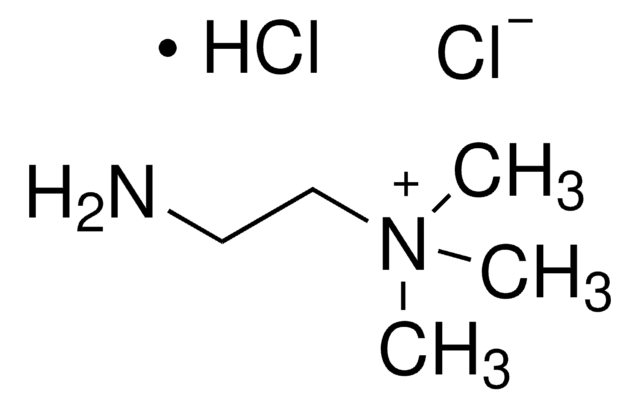

![[2-(Acryloyloxy)ethyl]trimethylammonium chloride solution 80 wt. % in H2O, contains 600 ppm monomethyl ether hydroquinone as inhibitor](/deepweb/assets/sigmaaldrich/product/structures/393/326/f7e19585-5431-4220-81b5-f458de6d63d0/640/f7e19585-5431-4220-81b5-f458de6d63d0.png)
![[3-(Methacryloylamino)propyl]trimethylammonium chloride solution 50 wt. % in H2O](/deepweb/assets/sigmaaldrich/product/structures/189/736/089bc8ae-2a98-416d-9f9a-a0a510b6b828/640/089bc8ae-2a98-416d-9f9a-a0a510b6b828.png)
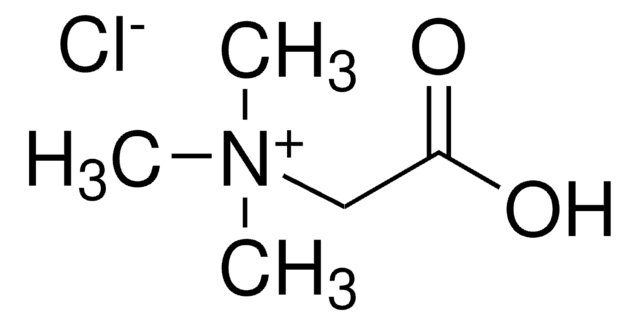
![[2-(Methacryloyloxy)ethyl]trimethylammonium chloride solution 75 wt. % in H2O](/deepweb/assets/sigmaaldrich/product/structures/316/612/66b0f4cf-d060-427d-b4f5-e8fab3e5cffe/640/66b0f4cf-d060-427d-b4f5-e8fab3e5cffe.png)



